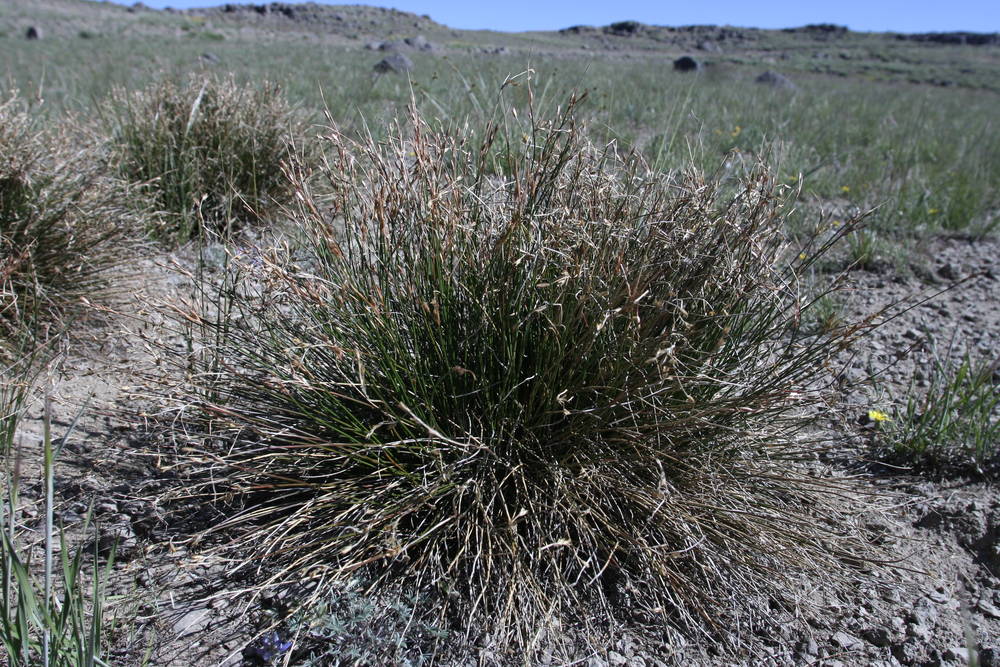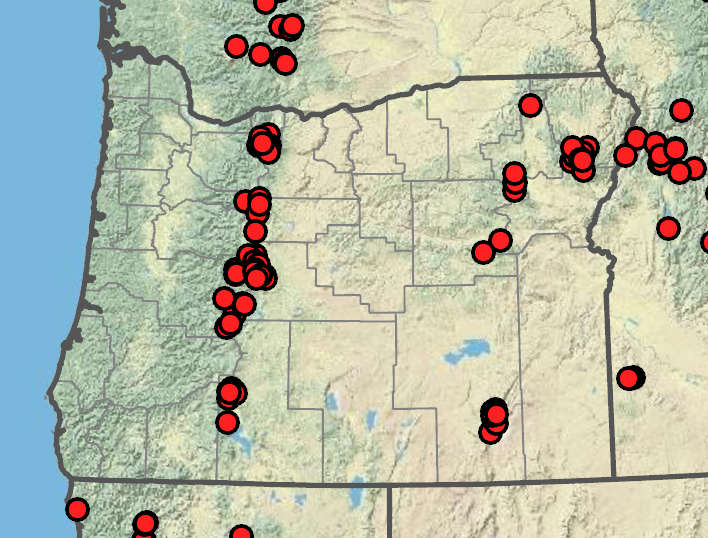Juncus drummondii
Drummond's rush, threeflower rush
lacking blades; the blades reduced to vestigial awns;
distal sheaths 2–6 cm, light brown.
a loose cluster of 1–3(5) flowers;
inflorescence bracts erect and stem-like, sometimes longer than inflorescence.
tepals 6, brown to dark brown;
stamens 6;
filaments 0.5–1.3 mm;
anthers 1–1.6 mm;
styles 0.1–0.25 mm.
4.5–8 mm; longer than or equaling the tepals, brown to dark brown;
apices notched, 3-chambered.
(0.7)1.2–2.3 × 0.2–0.3 mm;
bodies 0.5–0.6 mm, striate; tails prominent, 0.4–0.9 mm.
Juncus drummondii
Montane, subalpine, and alpine meadows, damp slopes, swales, gravel bars, springs, pumice. 700–2800 m. BR, BW, Casc. CA, NV, ID, WA; north to AK, southeast to NM. Native.
This species sometimes grows with the similar J. parryi, which has elongate leaf blades resembling stems, and often favors drier habitats.
Peter Zika
- Local floras:
BC,
CA,
OR,
WA
- Local Web sites:
CalFlora,
CalPhotos,
Flora NW,
PNW Herbaria
WildflowerSearch
iNaturalist (observations)
USDA Plants Database
- LBJ Wildflower Center
- SEINet
- Plants of the World Online
- Encyclopedia of Life
- Wikipedia
- Google Image Search

